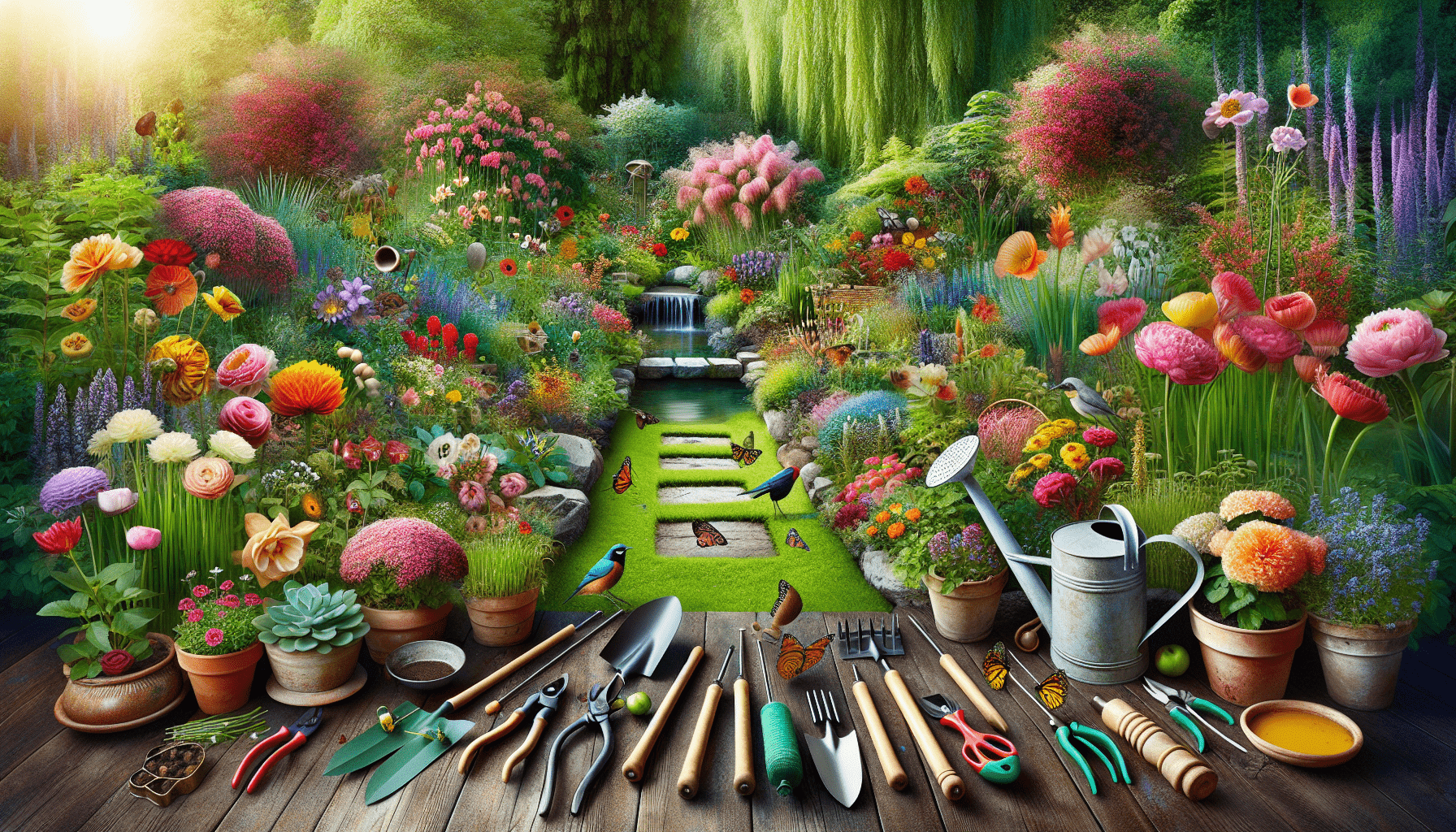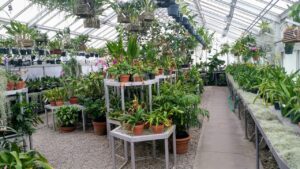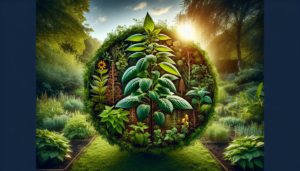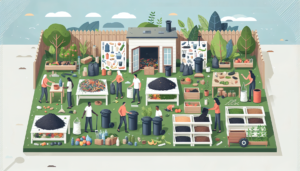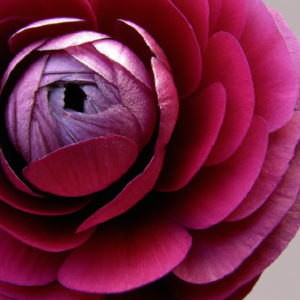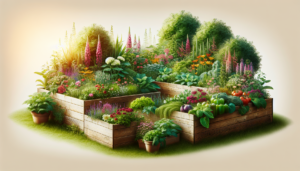Gardening Secrets Exposed: Top 10 Tips For A Thriving Garden Oasis!
Are you ready to unlock the secrets to creating a garden oasis that is the envy of all your neighbors? Look no further than this article, where we will reveal the top 10 tips for turning your garden into a thriving haven of beauty and tranquility. From selecting the right plants to maintaining optimal soil conditions, we’ve got you covered with all the essential information you need to cultivate a stunning and flourishing garden. So grab your gardening gloves and get ready to transform your outdoor space into a lush paradise!

Choosing the Right Plants
Consider your climate and soil type
When it comes to creating a thriving garden oasis, one of the first steps you should take is considering your specific climate and soil type. Different plants have different requirements, and by selecting plants that are well-suited to your local conditions, you can set yourself up for success. Take into account factors such as temperature ranges, rainfall patterns, and soil composition. Research the type of plants that thrive in your region and choose those that are best suited for your specific climate.
Select plants that are suitable for your garden’s sunlight exposure
The amount of sunlight your garden receives is another critical factor to consider when choosing the right plants. Some plants thrive in full sun, while others prefer partial or even full shade. Take note of your garden’s exposure to sunlight throughout the day and choose plants that can thrive in those conditions. This will help ensure that your plants can photosynthesize and flourish, resulting in vibrant foliage, beautiful flowers, and healthy growth.
Mix in native plants for easier maintenance
When selecting plants for your garden, it’s a great idea to mix in some native species. Native plants are adapted to the local climate, soil type, and the range of pests and diseases in the area. This means that they are generally low-maintenance and more resistant to common issues. By incorporating native plants into your garden, you can reduce the need for excessive watering, fertilization, and pest control. Additionally, native plants also provide essential habitats and food sources for local wildlife, making your garden an ecological haven.
Proper Watering Techniques
Water deeply and less frequently to encourage deep root growth
Proper watering is essential for the health and vitality of your plants. To achieve deep root growth and build resilience, it’s best to water deeply and less frequently. This encourages plants to develop strong, extensive root systems that can access moisture deeper in the soil. Shallow, frequent watering can result in weak roots and make plants more susceptible to drought stress. By providing a long, slow soak to your plants, you can help them establish a strong foundation, ensuring their long-term success.
Water in the early morning to prevent evaporation loss
Timing is crucial when it comes to watering your plants. Watering in the early morning, before the sun is at its peak, is the best time to ensure maximum moisture absorption. Watering during this time allows the plants to take up the water they need before the heat of the day sets in, reducing the risk of evaporation loss. It also provides the foliage and soil surface with ample time to dry before evening, minimizing the chance of fungal diseases. So grab your watering can or turn on your irrigation system in the early morning to give your plants the hydration they need.
Use a drip irrigation system for efficient watering
For efficient and precise watering, consider installing a drip irrigation system in your garden. Drip irrigation delivers water directly to the root zone of plants, reducing water waste through evaporation and runoff. It also helps prevent foliage diseases by keeping the leaves dry. Drip irrigation systems can be easily customized to accommodate different plant needs and can be controlled by timers to ensure consistent watering. This allows you to save time and resources while efficiently providing your plants with the right amount of moisture.
Mulching Strategies
Apply mulch to retain moisture and suppress weeds
Mulching is a simple yet effective technique to improve the health and appearance of your garden. By applying a layer of mulch around your plants, you can help retain moisture in the soil, reducing the need for frequent watering. Mulch also acts as a natural weed suppressant, preventing weed growth and competition for resources. This means less time spent pulling weeds and more time enjoying your garden. Choose organic materials such as bark, compost, or straw as mulch to enhance soil fertility and add nutrients as they decompose.
Use organic materials like bark, compost, or straw for mulching
When it comes to choosing the right mulch, opt for organic materials that provide additional benefits to your garden. Bark mulch not only retains moisture and suppresses weeds but also adds organic matter to the soil as it breaks down. Compost is an excellent choice for mulch as it enriches the soil with nutrients and improves its structure. Straw mulch helps maintain soil temperature and moisture levels while providing insulation for plant roots. These organic mulching materials contribute to the overall health and fertility of your garden’s soil.
Replenish mulch regularly to maintain its effectiveness
To ensure the continued effectiveness of mulching, it’s important to replenish it regularly. Over time, mulch breaks down, decomposes, and may become less effective in retaining moisture and suppressing weeds. By periodically adding a fresh layer of mulch, you can rejuvenate its benefits and maintain a healthy garden. Aim to replenish mulch at least once a year or whenever you notice it becoming thin or decomposed. This will help keep your plants happy and your garden looking tidy and beautiful.
Soil Health and Fertilization
Test your soil to determine its pH and nutrient levels
Understanding the composition of your garden soil is instrumental in maintaining healthy plant growth. Testing your soil allows you to determine its pH level and nutrient content. A pH test will indicate whether your soil is acidic, neutral, or alkaline, helping you select plants that thrive in the appropriate pH range. Nutrient testing will highlight any deficiencies or excesses, guiding you in the selection and application of fertilizers. Soil testing kits are readily available at garden centers, or you can send soil samples to a professional laboratory for analysis.
Amend soil with organic matter like compost or manure
To improve soil health and fertility, it’s beneficial to amend your soil with organic matter. Compost and well-rotted manure are excellent choices as they enrich the soil with essential nutrients, improve its structure, and enhance its ability to retain moisture. The organic matter also promotes beneficial microbial and earthworm activity, creating a healthy ecosystem for your plants. Spread a layer of compost or manure over the surface of the soil and gently incorporate it using a garden fork or tiller. Doing this before planting will provide a nutrient-rich environment for your plants to thrive.
Fertilize plants according to their specific needs
Fertilizing your plants is an essential aspect of gardening, but it’s important to do it correctly. Different plants have varying nutrient requirements, so it’s crucial to fertilize them according to their specific needs. Read the labels on fertilizer packaging to identify the nutrient ratios and follow the recommended application rates. Avoid overfertilizing, as this can lead to nutrient imbalances, excessive growth, and environmental pollution. Remember to adjust your fertilization routine as your plants grow and their needs change throughout the growing season.

Pest and Disease Control
Inspect plants regularly for signs of pests or diseases
As a diligent gardener, it’s essential to regularly inspect your plants for signs of pests or diseases. Be on the lookout for chewed leaves, discolored foliage, wilting, or stunted growth. Check the undersides of leaves for eggs, larvae, or adult pests. Early detection allows for prompt intervention before the problem worsens. By identifying and addressing pest and disease issues early on, you can prevent widespread damage and ensure the overall health of your garden.
Encourage beneficial insects like ladybugs and lacewings
When it comes to pest control, nature has its own army of helpers. Encouraging beneficial insects like ladybugs, lacewings, and hoverflies can be an effective and eco-friendly method of keeping harmful pests in check. These insects are natural predators of pests such as aphids, caterpillars, and mites. They play a vital role in maintaining a balanced ecosystem within your garden. To attract these beneficial insects, you can provide them with nectar and pollen sources such as flowering plants or install special insect houses.
Use organic pest control methods whenever possible
In your quest for a thriving garden oasis, it’s important to prioritize organic pest control methods whenever possible. Chemical pesticides can harm beneficial insects, contaminate soil and water, and have long-lasting detrimental effects on the environment. Instead, opt for organic solutions such as insecticidal soaps, neem oil, or botanical extracts. These natural remedies target specific pests while being safer for beneficial insects, humans, and pets. Additionally, practicing proper garden hygiene by removing and disposing of infected plant material can help prevent the spread of diseases.
Pruning and Deadheading
Prune plants to promote healthy growth and shape
Pruning is a critical gardening technique that involves selectively removing parts of plants to promote healthy growth and shape. Regular pruning helps plants maintain an appropriate size, improves air circulation, and encourages the development of strong branches. It is important to use clean and sharp pruning tools to minimize the risk of disease transmission. Consult gardening resources or seek advice from local experts to learn the proper pruning techniques for different types of plants in your garden.
Deadhead flowers to encourage new blooms
Deadheading is the process of removing faded or spent flowers from plants. This practice not only keeps your garden looking neat and tidy but also stimulates the production of new blooms. By removing the old flowers before they have a chance to set seeds, the plant redirects its energy into producing more flowers. Deadheading prevents plants from diverting resources towards seed development, allowing them to put their energy into flower production, resulting in more vibrant, abundant blooms throughout the growing season.
Avoid over-pruning to prevent stress on plants
While pruning has its benefits, it’s important to avoid over-pruning, as it can cause stress to the plants. Overzealous pruning can weaken the plant, making it more susceptible to diseases and pest infestation. Each plant has its own tolerance for pruning, so it’s best to research and understand the recommended methods for each specific species. When in doubt, always start conservatively and prune incrementally to maintain a healthy balance that encourages growth and vitality.

Companion Planting
Plant compatible species together to enhance growth and repel pests
Companion planting involves strategically planting compatible species in close proximity to enhance growth and repel pests. Some plants naturally complement each other by sharing resources or repelling certain pests. For example, planting marigolds among vegetables can help deter aphids, while tall, flowering plants can provide shade and support for vine vegetables. By harnessing the power of companion planting, you can create a well-balanced and harmonious garden ecosystem that maximizes the health and productivity of your plants.
Utilize companion planting charts to find ideal plant pairings
To make the most of companion planting, utilize companion planting charts. These charts provide valuable information about which plants thrive when planted together and which combinations should be avoided. They give you a quick reference guide to create successful plant pairings, taking into consideration factors such as pest resistance, nutrient requirements, and growth habits. By consulting these charts, you can plan your garden layout strategically and create synergistic relationships between your plants.
Experiment with different combinations to find what works best for your garden
While companion planting charts can provide helpful guidance, don’t be afraid to experiment and discover what works best for your garden. Every garden is unique, and factors such as soil conditions, microclimates, and local pest populations may vary. By trying out different combinations of companion plants, you can observe which arrangements result in healthier and more productive plants. Remember to take note of your observations and adjust your planting strategies accordingly for future seasons.
Seasonal Maintenance
Create a gardening calendar to keep track of seasonal tasks
A gardening calendar is an invaluable tool for staying organized and keeping track of seasonal tasks. By creating a schedule of key gardening activities, you can ensure that you don’t miss important maintenance activities throughout the year. Include tasks such as planting, pruning, fertilizing, mulching, and harvesting. Additionally, note important dates such as the last frost date in spring and the first expected frost date in fall. A gardening calendar helps you stay on top of your garden’s needs and maintain its health and beauty year-round.
Prepare for winter by protecting plants from frost and cold temperatures
As the temperature drops and winter approaches, it’s essential to prepare your garden for the colder months. Frost and extreme cold can damage or kill plants, especially those that are not suited to your local climate. Before the first frost, take necessary steps to protect sensitive plants. Cover them with frost blankets or burlap, or bring potted plants indoors. Mulching around the base of plants can also help insulate the roots. By providing protection, you can increase the chances of survival and ensure a successful transition into the following growing season.
Plan ahead for spring by starting seeds indoors
To maximize your gardening success in the spring, start planning and sowing seeds indoors during the winter months. Many plants benefit from a head start indoors before being transplanted outside. Research the specific requirements for the seeds you want to start, including optimal germination temperatures, light conditions, and transplanting timelines. Gather the necessary equipment, such as seed trays, potting mix, and grow lights. By starting seeds indoors, you can extend your growing season and have robust, healthy seedlings ready for planting once the weather warms up.

Attracting Pollinators
Plant flowers that attract bees, butterflies, and other pollinators
To create a vibrant and flourishing garden oasis, it’s crucial to attract and support pollinators. Pollinators such as bees, butterflies, and hummingbirds play a vital role in the reproductive success of many plants. By planting flowers that are rich in nectar and pollen, you can lure these valuable pollinators to your garden. Choose a variety of flowering plants with different blooming periods to provide a continuous food source for pollinators throughout the growing season. Be mindful of including native plants that are particularly attractive to native pollinators.
Avoid using pesticides that harm beneficial pollinators
While it’s important to protect your garden from pests and diseases, it’s equally important to avoid using pesticides that harm beneficial pollinators. Chemical pesticides can have detrimental effects not only on harmful insects but also on bees, butterflies, and other pollinators. Whenever possible, opt for natural pest control methods and organic products. Encouraging a healthy population of beneficial insects, as mentioned earlier, can also help keep pest populations in check naturally. By being conscious of your pesticide use, you can create a safe and welcoming environment for pollinators.
Provide nesting sites and water sources for pollinators
To further support pollinators in your garden, provide them with additional resources beyond flowers. Different pollinators have specific nesting and water requirements. For example, solitary bees may benefit from bee houses or small piles of natural materials for nesting. Butterflies often rely on specific host plants where they lay their eggs and caterpillars can feed. Providing shallow dishes filled with water or a small birdbath with a shallow water source can serve as vital water stations. By creating a pollinator-friendly environment, you can contribute to their conservation efforts while enjoying the beauty they bring to your garden.
Continuous Learning and Adaptation
Stay informed about new gardening techniques and trends
Gardening is a lifelong learning experience, and staying informed about new techniques and trends can help you continually improve as a gardener. Explore gardening websites, read books and magazines, and engage with online gardening communities to keep up with the latest developments. Stay curious and open to trying new methods in your garden. By expanding your knowledge and skills, you can enhance your gardening experience and achieve even greater success in creating a thriving garden oasis.
Learn from your successes and failures in the garden
Every gardener encounters both successes and failures along their gardening journey. Embrace these experiences and learn from them. Take note of which plants thrived in your garden and the factors that contributed to their success. Similarly, reflect on plants that struggled or failed to identify potential causes and lessons to avoid in the future. Gardening is a dynamic process, and each season presents new opportunities to learn and adapt. By being receptive to lessons from both triumphs and setbacks, you can cultivate a garden that continually flourishes.
Adapt your strategies based on the unique needs of your plants and environment
Every garden is unique, with its own set of conditions and challenges. To achieve a thriving garden oasis, it’s essential to adapt your strategies based on the specific needs of your plants and environment. Pay attention to how individual plants respond to different cultural practices such as watering, fertilizing, and sun exposure. Monitor the conditions in your garden, including temperature, humidity, and prevailing winds. By observing and responding to the needs of your garden, you can make informed decisions and tailor your gardening practices for optimal success.

